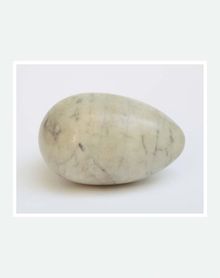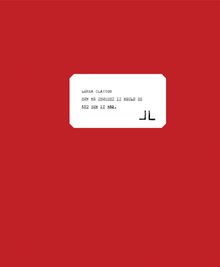| |||||||||||||||||||||||||
ARTIST MONOGRAPHS
|
|
in stock $30.00 Free Shipping UPS GROUND IN THE CONTINENTAL U.S. |
 Lenka Clayton: Sculptures for the Blind
Lenka Clayton: Sculptures for the Blind
Published by J&L Books.
In the archives of the Philadelphia Museum of Art, Pittsburgh-based artist Lenka Clayton (born 1977) came across a letter written in 1978 by a member of the public to the curator of 20th-century art. The writer—a Mr. Brian H. Morgan—describes a white marble egg made by his Romanian great-grandfather Peter Finck. He notes a startling similarity between this egg and Brancusi’s “Sculpture for the Blind,” in the museum’s collection. The letter poses this question: “What is it about Brancusi that makes his egg a work of art suitable for a museum, and not the egg by Finck?” At its heart is a timeless question: how does one object come to be understood as an important work of art, while another, so similar, is entirely forgotten? Clayton found the letter almost 40 years after it was written and discovered that it was never answered. She sent a copy of the letter to 1,000 curators, museum directors and other art professionals, inviting them to imagine that the letter was addressed to them and to respond to Mr. Morgan.
PUBLISHER
J&L Books
BOOK FORMAT
Paperback, 6.5 x 8.5 in. / 200 pgs / 175 bw.
PUBLISHING STATUS
Pub Date 4/24/2018
Active
DISTRIBUTION
D.A.P. Exclusive
Catalog: SPRING 2018 p. 113
PRODUCT DETAILS
ISBN 9780999365502 TRADE
List Price: $35.00 CAD $47.50 GBP £30.00
AVAILABILITY
In stock
in stock $35.00 Free Shipping UPS GROUND IN THE CONTINENTAL U.S. |

